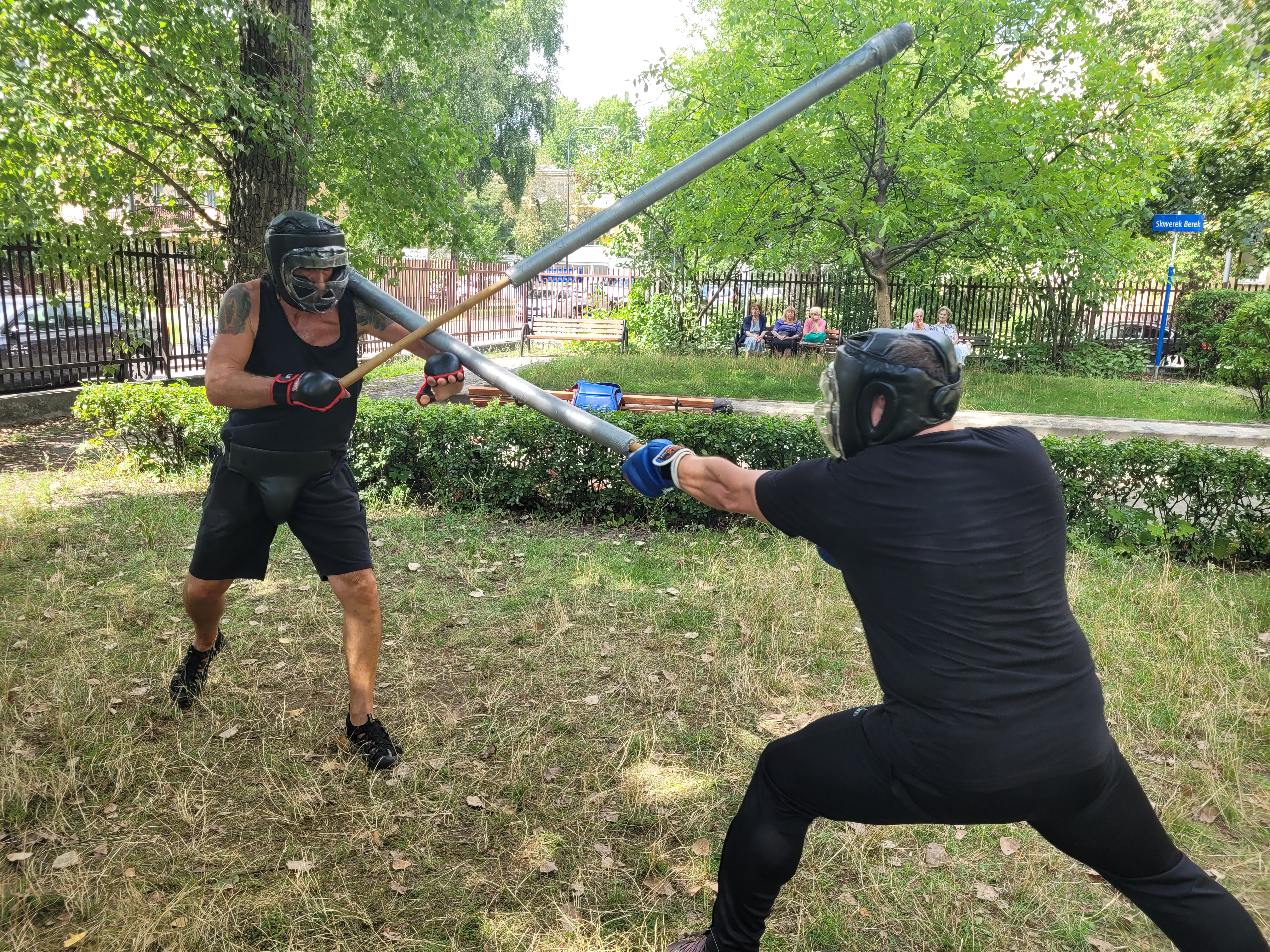YIQUAN ACADEMY TRAINING PROGRAM
As we have just replied to a question p.m. about what a beginner could learn with us during 4 weeks everyday training, I think it might be interesting to more people, so I post my reply here:
Basic level program can be learned by participating in our 4 two weeks courses. Each of such 2 weeks courses covers 1 of 4 sections of basic level program.
Theoretically, taking 4 weeks at one go, you could go through 2 sections (half of basic level program), but for most students it is too much material to digest at one go. For those who can come for 1 month I would rather suggest doing one section during first 2 weeks, and making repetition during following 2 weeks, possibly also learning some elements from second section.
First section includes:
- 10 "health postures",
- 1 basic "combat posture with 5 variants of mo li ("feeling strength")
- moca bu - "friction steps",
- 9 shi li exercises both in fixed position and with steps (3 "basic shi lis", 3 "tui shou shi lis", 3 "san shou shi lis")
- fa li exercises, starting from forward fa li, and then fa lis related to tui shou shi lis and san shou shi lis,
- 1 fist punch - with 3 variants in fixed position, and 5 variants steps,
- hitting with palm with the same variants like fist,
- 1 kick,
- basic single pushing hands in fixed position, forward-backward step and circular step,
- basic double pushing hands in fixed position and with steps, without palms changing and with palms changing,
- fa lis related to tui shou shi lis practiced with partner in tui shou context,
- reaction practice in action of neutralizing one of those fa lis,
- learning to notice opponent's lack of controlling strength in pushing hands and hitting using your own "pointing strength".
In second section:
- next stage of practice of health postures,
- 3 more combat postures, each of them with 5 variant of feeling strength,
- 3 shenfa (body work) shi lis,
- mixing all learned shi lis in fixed position and with steps,
- next methods of hitting with fist,
- one more kick,
- kicking practice with partner,
- hitting with elbows, head, shoulder, hip, knee,
- eyes training,
- shi sheng (voice/breath) training,
- "combat steps"
- introduction to attack and defense training,
- using all learned fa lis in single and double pushing hands,
- Countering the most basic methods of fa lis in double and single pushing hands,
- introduction to mojinde pushing hands (free pushing hands with focus on feeling and not on winning).
In third section
- next stage of practice of health postures,
- more advanced combat postures: taming the tiger, landing dragon, one leg posture, all of them with 5 variants of feeling strength,
- one more kick,
- practice of punching, kicking and hitting with other parts of body on boxing bag and pads,
- practice of punching in pushing hands,
- practice of counters against various fa lis in pushing hands (including counters against hitting),
- hitting while running,
- free punching with free footwork,
- free fa lis (any, not just punching) with free fotwork,
- san shou reaction training,
- simplified light san shou, focusing on footwork
- free pushing hands practice
In fourth section
- next combat postures: standing on one leg with the other leg supported on something, "birds flying with difficulty", and sitting variants of combat postures (feet not touching ground) - all of them with 5 variants of feeling strength,
- punching, kicking and hitting with other parts of body practiced on a cotton ball,
- wooden pole shi lis and fa lis,
- sitting variants of pushing hands (feet not touching ground),
- free pushing hands,
- san shou,
- introduction to jian wu (transitory stage from mixed shi li to free shi li)
The idea is to learn the sketch of the whole training system as fast as possible. So you could do it by participating in just 4 courses, 2 weeks each (or 8 one week courses, or for example 24 weekend seminars).
This way you can get the general picture soon, better understanding how the most basic methods are actually related to those more advanced, and this way avoiding nurturing wrong ideas about what you do.
In case of many methods, in the basic level program the most basic, simple variants of them are introduced (otherwise it couldn't be done so fast). Then when you have the basis, you go through the program again, but on higher level (going deeper into methods, more demanding variants, more numerous variants, more adaptability). So this is kind like going in circle or rather in spiral, as if through the same program, but at higher level: basic, intermediate, advanced and enhancing (deepening).
Wang Xiangzhai himself, when was explaining the whole training system, after talking about all methods from zhan zhuang to combat practice, at the end condluded: "And when you arrive at the point of beginning of beginning, you should start from beginning once again" - this is the basis for Yao Chengguang's training program.
When you just start from learning for example zhan zhuang and shi li, you can have many funny ideas about what are you doing, and it might lead you astray. But when you complete the basic level program, you better understand their meaning and place in the whole system, so you can practice them better, and this in turn gives you better basis for other methods, and again it gives you next level of understanding the most basic methods.




Comments
Post a Comment